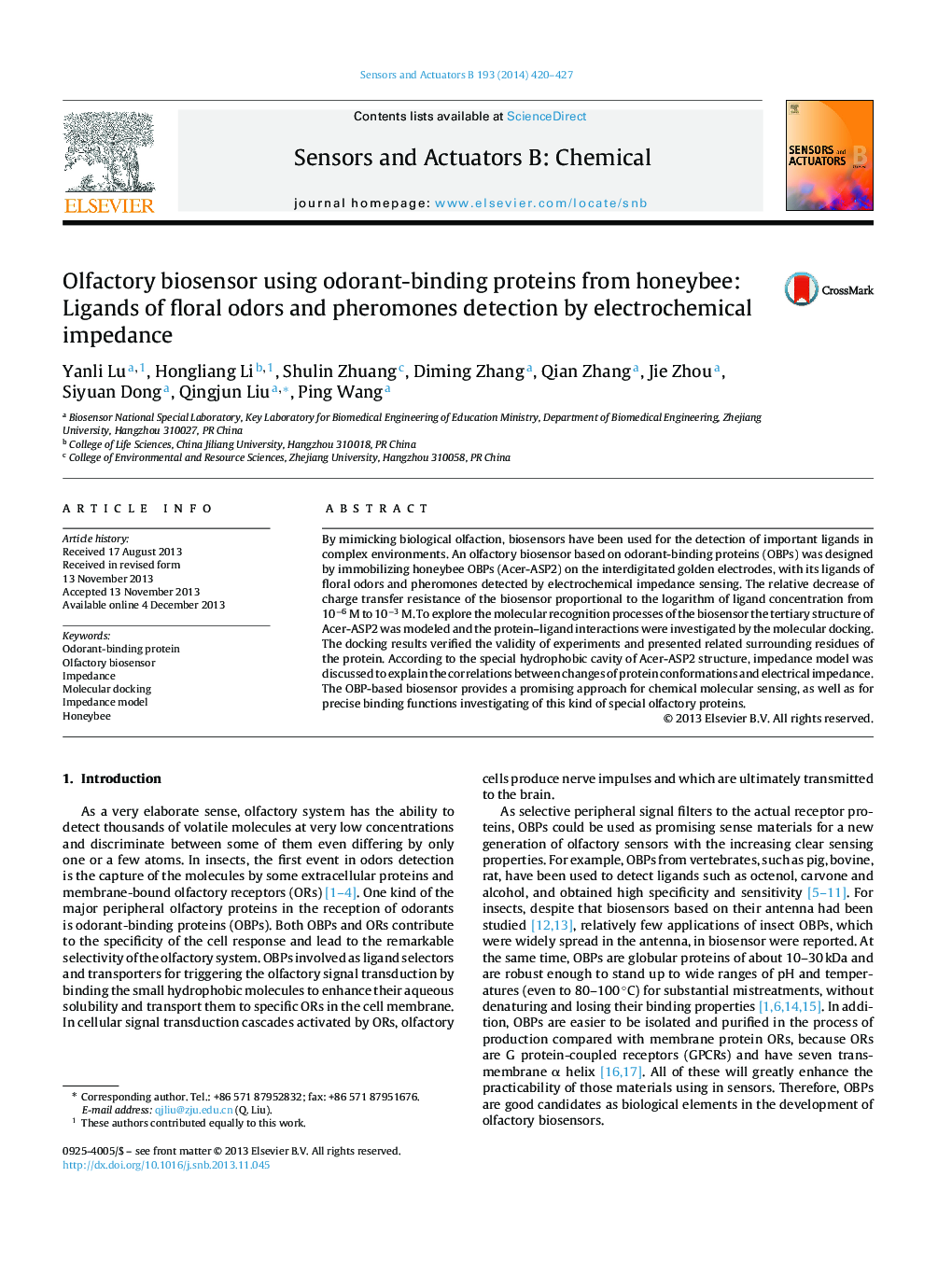| Article ID | Journal | Published Year | Pages | File Type |
|---|---|---|---|---|
| 740091 | Sensors and Actuators B: Chemical | 2014 | 8 Pages |
By mimicking biological olfaction, biosensors have been used for the detection of important ligands in complex environments. An olfactory biosensor based on odorant-binding proteins (OBPs) was designed by immobilizing honeybee OBPs (Acer-ASP2) on the interdigitated golden electrodes, with its ligands of floral odors and pheromones detected by electrochemical impedance sensing. The relative decrease of charge transfer resistance of the biosensor proportional to the logarithm of ligand concentration from 10−6 M to 10−3 M. To explore the molecular recognition processes of the biosensor the tertiary structure of Acer-ASP2 was modeled and the protein–ligand interactions were investigated by the molecular docking. The docking results verified the validity of experiments and presented related surrounding residues of the protein. According to the special hydrophobic cavity of Acer-ASP2 structure, impedance model was discussed to explain the correlations between changes of protein conformations and electrical impedance. The OBP-based biosensor provides a promising approach for chemical molecular sensing, as well as for precise binding functions investigating of this kind of special olfactory proteins.
